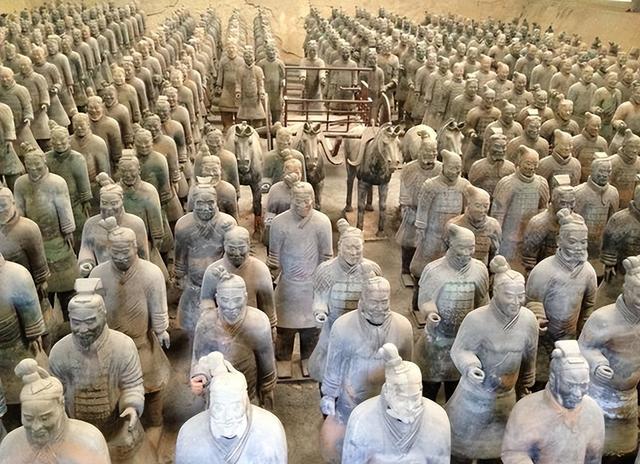
What's the Truth About the Terracotta Army?
The Terracotta Army is one of the most iconic archaeological discoveries of all time, a testament to the power and ambition of the first emperor of China, Qin Shi Huang. While the thousands of life-size terracotta soldiers, horses, and chariots are impressive in their own right, they represent just a fraction of the vast mausoleum complex constructed for the emperor. In fact, the Terracotta Army is just the tip of the iceberg, a grand gateway to a hidden world that remains largely unexplored.
The Terracotta Army: A Grand Guardian Force
Discovered in 1974 by farmers digging a well near Xi'an, China, the Terracotta Army has captivated the world's imagination. Each figure is unique, with individual facial features, hairstyles, and armor, showcasing the incredible skill of the artisans involved in their creation. These figures were not merely decorative; they were intended to serve as a powerful guardian force, protecting the emperor in the afterlife.
The sheer scale of the Terracotta Army is staggering. It is estimated that over 8,000 soldiers, 130 chariots, and 670 horses are buried within the three pits that have been excavated so far. However, this is only a small portion of the entire mausoleum complex.
The Real Tomb: An Underground Empire Yet to be Unearthed
The true marvel of Emperor Qin Shi Huang's final resting place lies not in the already unearthed pits, but in a massive, sealed tomb that remains untouched by archaeologists. This central tomb, marked by a large mound of earth, is believed to contain the emperor's burial chamber and a treasure trove of artifacts, offering an unparalleled glimpse into the opulence and grandeur of the Qin Dynasty.
Historical accounts describe the tomb as a microcosm of the emperor's earthly domain. The ceiling is said to be decorated with celestial maps, while the floor depicts the geography of his vast empire. Precious stones and pearls illuminate the tomb, simulating the sun, moon, and stars. Legend even claims that rivers of mercury flow through the tomb, representing the major waterways of China.
Why Hasn't the Tomb Been Opened?
The decision to keep Emperor Qin Shi Huang's tomb sealed is a multifaceted one.
- Preservation Concerns: The primary reason is the potential for irreparable damage to the tomb's contents. Ancient texts mention the presence of mercury, known for its preservative properties but also highly toxic. Exposure to air and light could cause rapid deterioration of delicate artifacts, including silk fabrics, wooden objects, and even the emperor's remains.
- Technological Limitations: Currently, archaeologists lack the technology to safely excavate and preserve the tomb's contents. New techniques and equipment need to be developed to ensure the long-term preservation of these invaluable artifacts.
- Ethical Considerations: There is an ongoing debate about the ethics of disturbing ancient burial sites. Some argue that these tombs should be left undisturbed out of respect for the deceased and their cultural beliefs.
The Future of the Terracotta Army and Emperor Qin Shi Huang's Tomb
The Terracotta Army continues to be a source of fascination and study for archaeologists and historians worldwide. New discoveries are constantly being made, shedding light on the construction techniques, military strategies, and cultural practices of the Qin Dynasty.
As for the emperor's tomb, it remains a tantalizing mystery, its secrets waiting to be unlocked by future generations. Advanced imaging techniques, such as ground-penetrating radar and muon tomography, are already being employed to map the tomb's interior and identify potential areas of interest.
The combination of scientific advancement, careful planning, and ethical considerations will eventually pave the way for the safe and responsible excavation of Emperor Qin Shi Huang's tomb, promising a treasure trove of knowledge and insights into one of the most pivotal periods in Chinese history.
Q&A
Q: When was the Terracotta Army discovered? A: The Terracotta Army was discovered in 1974 by farmers digging a well.
Q: How big is the entire mausoleum complex? A: The entire mausoleum complex covers an area of over 50 square kilometers (20 square miles).
Q: What can we learn from the Terracotta Army?
A: The Terracotta Army provides valuable insights into the military organization, weaponry, armor, and cultural practices of the Qin Dynasty. It showcases the incredible craftsmanship of the time and the grand vision of Emperor Qin Shi Huang.